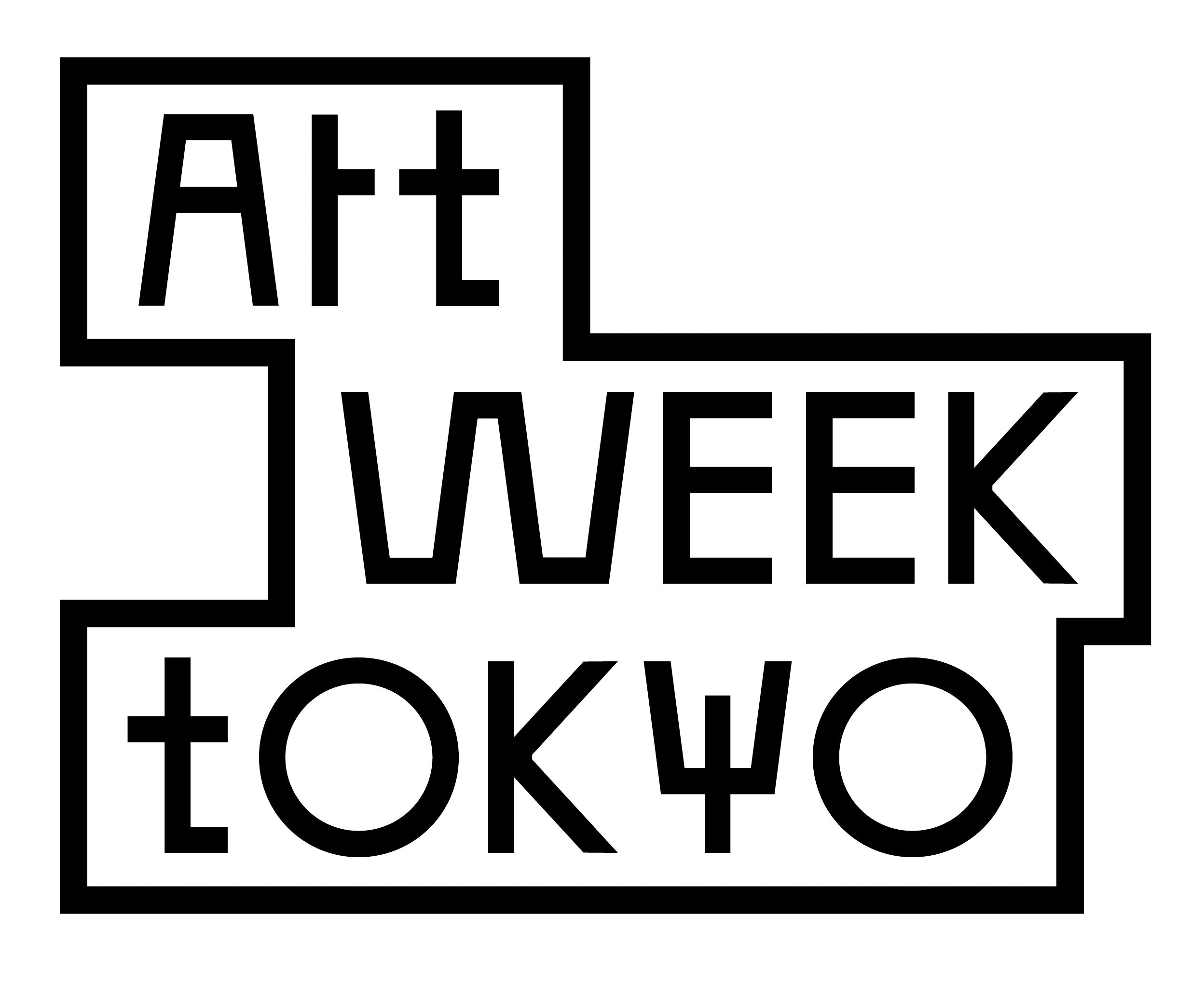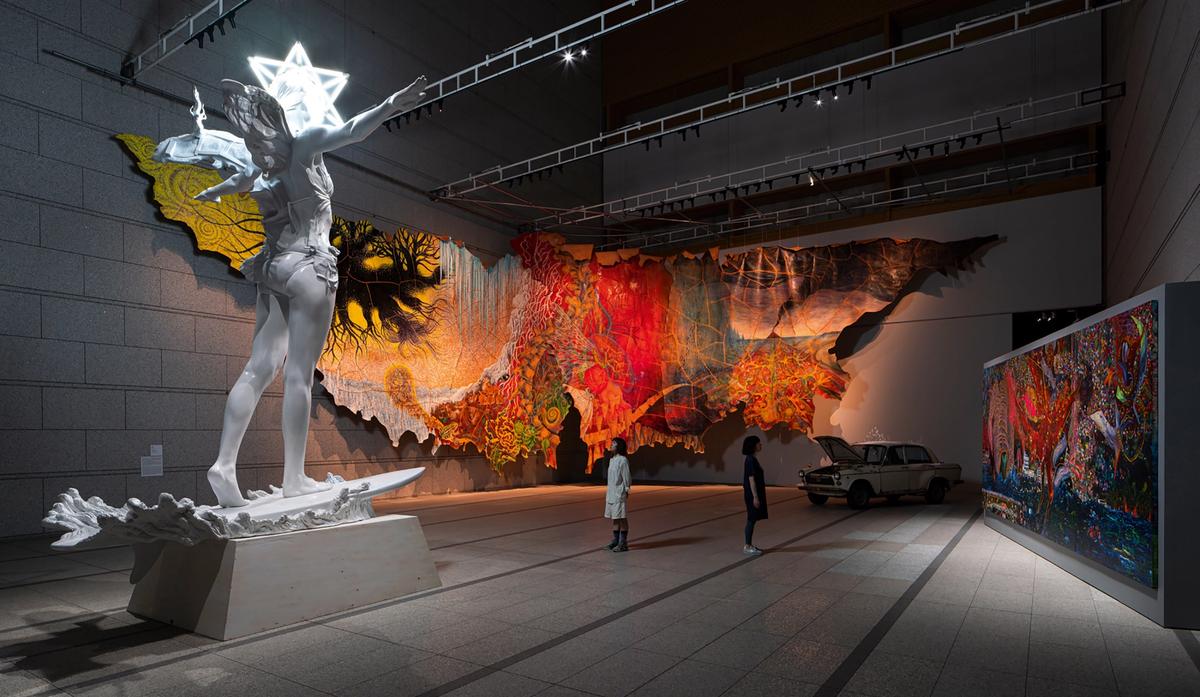The psychiatrist Ryutaro Takahashi has spent the past three decades building one of the most impressive and visible collections of contemporary Japanese art, with regular displays in Takahashi’s own viewing spaces and focused exhibitions in regional museums. A presentation at Museum of Contemporary Art Tokyo (MOT) is the most substantial to date, drawing together 234 works from more than 3,500 in his collection to offer a self-described Personal View of Japanese Contemporary Art (until 10 November). Inflected towards legacies of Japanese Pop, the Takahashi collection maps some of the broader trends in the country’s art scene as well as the ways artists have engaged with socio-political conditions in recent history. Alongside other offerings during Art Week Tokyo it provides an opportunity to reflect on the past 30 years.
No consideration of this period of Japanese art would be complete without mentioning the lingering effects of the “bubble economy”, the heady mix of loose monetary policy, easy credit and wild speculation that characterised the late 1980s. By 1995, when Takahashi established his collection, and MOT first opened its doors, the bubble had well and truly burst. The mark that the ensuing two “lost decades” of sluggish economic growth left on Japanese society extended to public art institutions and their capacity to represent all that was new and interesting in Japanese art.
MOT was one of almost 300 museums that opened across Japan between 1990 and 2000. The vast majority had been planned at the height of the bubble, but commenced operations in a vastly different fiscal environment. For all the construction, the same period saw museum operating budgets halved. In what became a familiar strategy of post-bubble austerity, MOT’s acquisitions budget was frozen between 2000 and 2005. Having developed in parallel to the museum, the Takahashi collection also fills some important gaps.

Tadanori Yokoo’s Old Tales Now: Drooling (1991). The artist was among those expressing a “fascination with and critique of the consumerism of Japan’s post-war economic recovery” Courtesy of the artist
The Neo-Pop generation
In the mid-1990s, a peculiarly Japanese slant on international postmodernism called Neo-Pop was in the ascendancy. The term was popularised by the critic Noi Sawaragi partly to indicate stylistic and thematic affinities with New York’s Neo-Geo group of Peter Halley, Ashley Bickerton and Jeff Koons, but also to distinguish it from earlier engagements with popular culture. Precursors as diverse as Daido Moriyama, Tadanori Yokoo and Yayoi Kusama (all represented in the exhibition at MOT) had expressed their fascination with and critique of the consumerism of Japan’s post-war economic recovery, but the younger Neo-Pop generation seemed comfortable with collapsing distinctions between high and low culture. The likes of Taro Chiezo, Kenji Yanobe and Yukinori Yanagi inventively invoked fetishisations of cuteness, resurgent nationalisms and the atomic age.
In Tokyo, an enterprising group of recent graduates extended these themes into strategies for surviving the post-bubble environment. Masato Nakamura masterminded guerilla open-air exhibitions in Tokyo’s urban spaces—The Ginburart (1993) and Shinjuku Shonen Art (1994), documented at MOT in video footage by Kazuhiko Hachiya. Tsuyoshi Ozawa developed “consultation art”, a counterpart to European relational aesthetics and US social practice, and playfully created Nasubi, a tiny portable gallery inside a milk crate. A few years later, Neo-Pop’s best-known exemplar, Takashi Murakami, would go on to create a parallel art system centred on his Kaikai Kiki organisation, adopting not only the iconography but the vertically integrated production model of manga and anime.

Ryutaro Takahashi, whose impressive collection of Japanese contemporary art is on show at MOT © Koichi Imai
The suspension of MOT’s collecting programme occurred precisely at the moment this generation was hitting its commercial stride in the international marketplace. The group exhibition Superflat—Murakami’s idiomatic take on Neo-Pop and its broader cultural context—opened at the Shibuya youth fashion hub Parco in 2000 before touring the US, deeply inflecting Western perceptions of Japanese art for at least the next decade. Yoshitomo Nara (whose show with Blum gallery features in Art Week Tokyo) attracted legions of fans by publishing a series of books just as the market priced his work out of the range of most collectors. The veteran artist Yayoi Kusama, meanwhile, became a staple of the global biennial boom, rising to become one of the world’s most recognisable artists.
Embracing the micropolitical
Domestically, however, the mood was more sombre. As Japan moved into a second recessionary decade, the art magazine Bijutsu Techo profiled the “Zero Zero Generation”—artists who would dominate the 2000s. The magazine’s contributor Yukie Kamiya described this cohort as “mild-mannered reformers” who were pursuing “feasible utopias” embedded in everyday life and were unafraid to use traditional symbols and techniques. The critic Midori Matsui identified similar qualities a few years later in what she called “Micropop”, a tendency that embraced the “micropolitical” in popular culture and individual everyday experience.

Chiharu Shiota’s Zustand des Seins – Wedding Dress (2008) Photo: Tetsuo Ito; © Jaspar, Tokyo, 2024 and the artist; courtesy of Kenji Taki Gallery
The work of this period could still be striking, as in the invocations of the human body by the painter Izumi Kato, the sculptor Motohiko Odani and the globe-trotting installation artist Chiharu Shiota, or Kohei Nawa and Teppei Kaneuji’s responses to screen culture and information overload. For Matsui, even the small gestures and unassuming works of figures like Hiroshi Sugito (the focus of a solo show during Art Week Tokyo at Tomio Koyama Gallery’s new space in Kyobashi) and Ryoko Aoki (likewise at Take Ninagawa) expressed “a pent-up anger at the monotony of the everyday and a longing for some kind of violent break with the existing order”.
More overt intimations of a break were becoming apparent in the work of artists outside the Micropop umbrella, such as Makoto Aida, whose epic canvases interrogate the psychic structures of post-war Japanese society with dark humour, or the satirical printmaker Sachiko Kazama, drawing as much on the 20th-century avant-gardes as on manga and anime. The mischievous collective ChimPom emerged in the mid-2000s, translating Jackass-style shenanigans and urban Tokyo youth culture into a provocative blend of installation, intervention and social critique.

An installation view of the MOT exhibition, including, from left: Kaneuji Teppei, Gray Puddle #13 (2014); White Discharge (Built-up Objects #21), (2012); SIDE CORE / EVERYDAY HOLIDAY SQUAD, Rode Work Tokyo_Spiral Junction (2022); and Kunimatsu Kineta, GODDESS (2022). Photo: Kenji Morita
Art after 3/11
This irreverent treatment of taboo subjects anticipated a broader trend that would emerge in the wake of the Tohoku earthquake, tsunami and nuclear disaster of 11 March 2011, known as 3/11 in Japan. As public frustration with official responses to the disaster manifested in an unexpected wave of mass demonstrations, the horizon of the political in Japanese art rapidly expanded from Micropop’s personal dilemmas. ChimPom confronted the nuclear disaster head-on, while the video artist Meiro Koizumi (whose works are showing with Mujin-to Production during Art Week Tokyo) became one of the more internationally visible artists exploring the dynamics of nationalism and repressed memories of imperialism and war. Throughout the 2010s, this environment also created space for outward expressions of gender and sexuality, while artists from Okinawa and diverse cultural backgrounds found new platforms.
These shifts, from Neo-Pop to Micropop to post-3/11 art, are of course schematic—the art of the past 30 years remains as thematically, stylistically and materially diverse as ever. As points of distinction, MOT’s Takahashi collection presentation also includes more senior figures such as Kishio Suga, a mainstay of the Mono-ha movement; the photographer Lieko Shiga’s exemplary community engagement; and fascinating dialogues with street culture and daily life by Hiraku Suzuki, SIDE CORE and Yuko Mohri (the latter two at present have museum shows at Watari-um and Artizon Museum respectively).
The sheer scale of Tokyo’s museum and gallery infrastructure, which has flourished despite the pressures of the lost decades, matches the enduring magnetism of the city itself. The past ten years in Japanese art have not been without their tensions as spectres of censorship and self-censorship have loomed, most notably in the debates around the 2019 Aichi Triennale. But as throughout the preceding years of economic slowdown, artists and their supporters have responded with resourcefulness and invention in the face of difficulty.
• Reuben Keehan is the curator of contemporary Asian art at Queensland Art Gallery | Gallery of Modern Art, Brisbane



